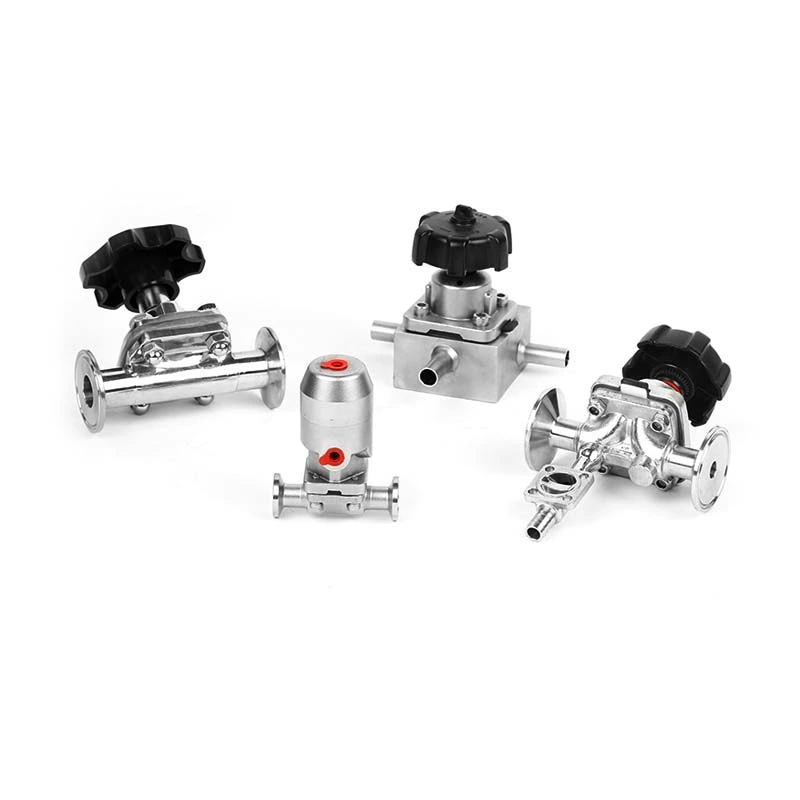Seven Usage Characteristics Of Sanitary Diaphragm Valves
The seven features of Sanitary Diaphragm Valve are as follows:
1. The soft rubber sanitary diaphragm valve can cut off the medium without leakage;
2. Because rubber has a certain corrosion resistance, there was no better corrosion-resistant material before the 1960s, and it was usually promoted and applied as a corrosion-resistant material, and it even continues to this day;
3. The flow path is simple, it has a "self-cleaning" effect, and can be used for unclean media;
4. Opening characteristics, but when used as a corrosion-resistant regulating valve, it has to use the front part of the quick opening characteristics, its effective stroke is short, and the adjustment quality is poor;
5. Especially a fatigue test piece, forced to fold up and down, is easy to damage, because the diaphragm is an unreliable part, resulting in a short valve life, which is a fatal disadvantage. Because of this, sanitary diaphragm valves should be eliminated and replaced with ball valves and full-function ultra-light valves;
6. When closed, the medium force pushes the diaphragm upward, the unbalanced force is large, and a large actuator thrust is required. Therefore, a particularly large, bulky and heavy actuator must be selected, making the valve weight very bulky, twice that of a ball valve and 3-4 times that of a full-function ultra-light valve;
7. It is particularly important to emphasize that more and more corrosion-resistant materials are available, especially in the late 1980s when the fluoroplastic lining process was solved and fluoro-lined ball valves were introduced. Since fluoroplastics are more corrosion-resistant and heat-resistant than rubber, and the ball core of a ball valve is ten or a hundred times more rigid than the diaphragm of a sanitary diaphragm valve, it is recommended that in the case of cutting off and regulating corrosive media, sanitary diaphragm valves should not be used as much as possible, and corrosion-resistant fluoro-lined ball valves, butterfly valves and all-PTFE single-seat valves should be used.
